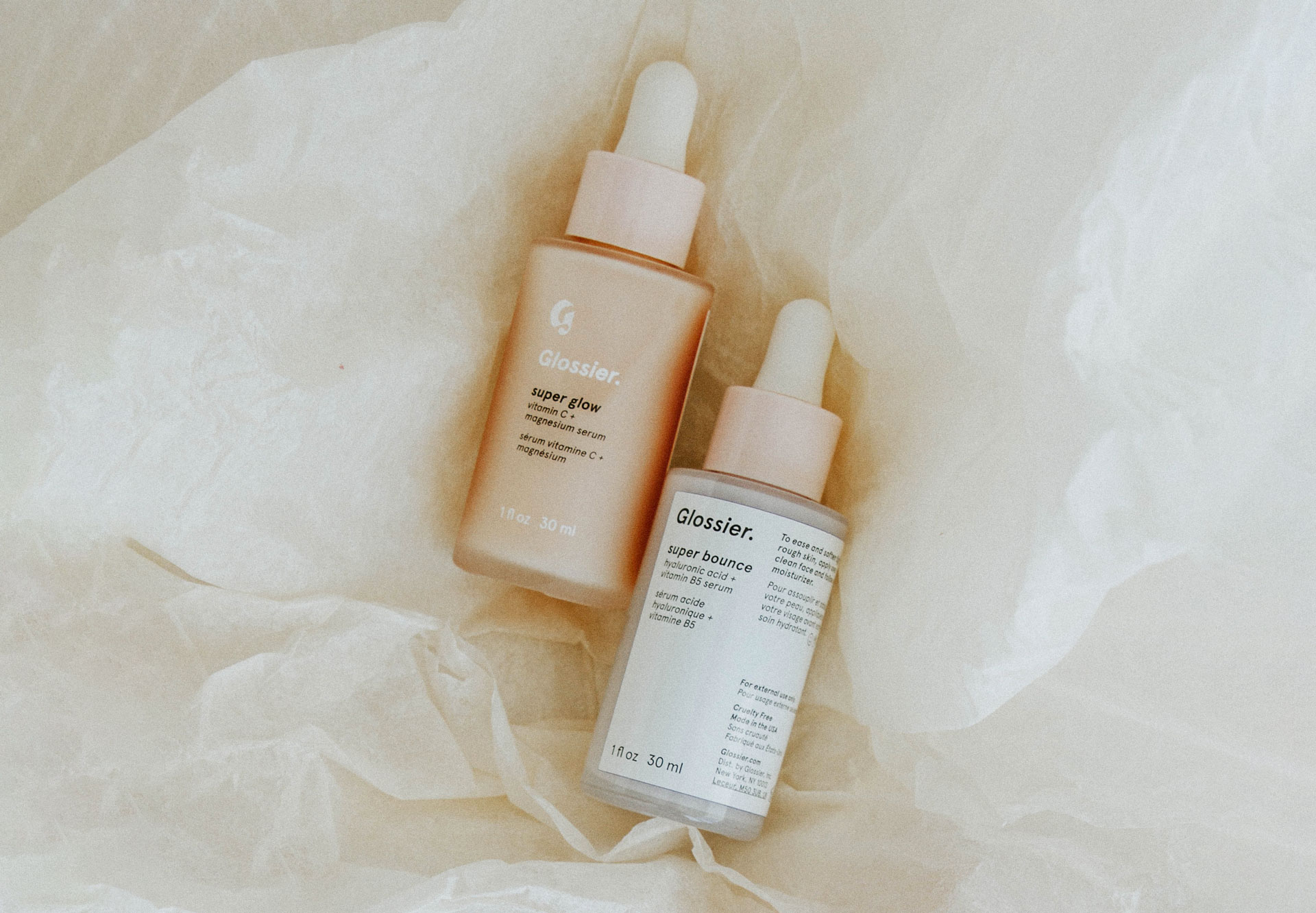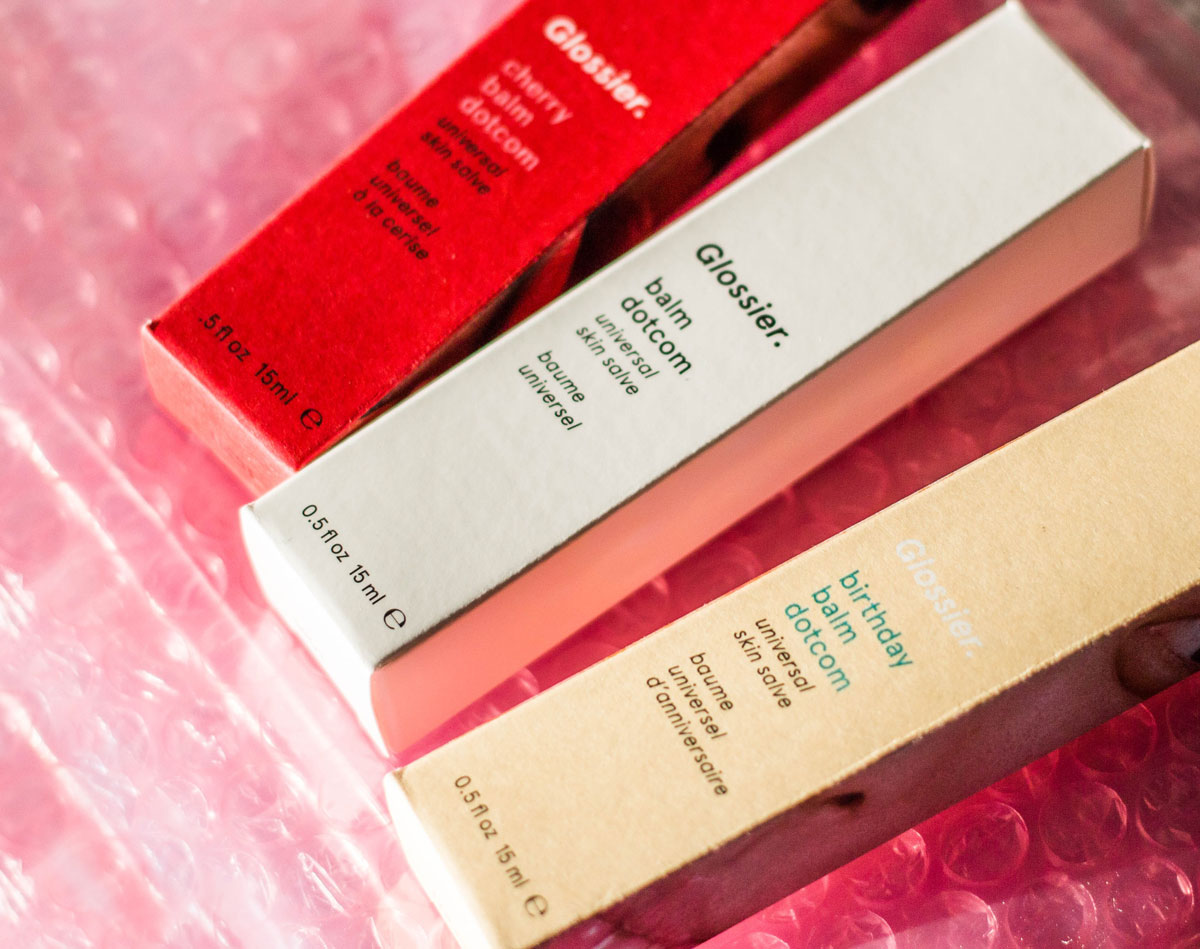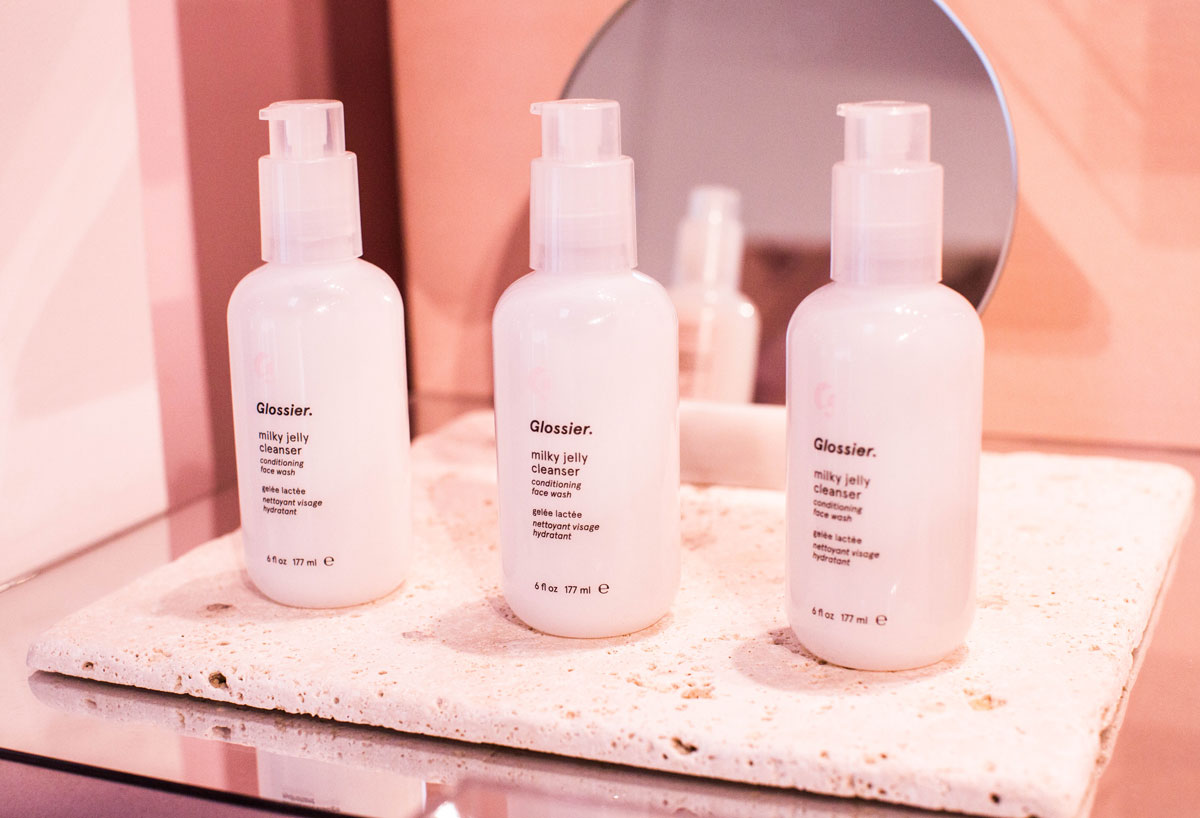The Gloss Boss
Emily Weiss is the face and mind behind one of the most popular beauty brands in the world: Glossier. What’s outstanding about her story is that the brand started as nothing more than a blog, taking the beauty industry by storm and drastically changing its relationship with its customers.
Glossier is a classic linear commerce model, where a digital native business owns the audience that it sells to by creating content around a target market, or indeed, as in this case, a publisher has an audience and creates the products that its readers desperately want. This 360º model is a huge growth opportunity and one that can be successfully adopted by agency owners, particularly those who specialise in growth marketing.


Emily Weiss is the face and mind behind one of the most popular beauty brands in the world: Glossier. What’s outstanding about her story is that the brand started as nothing more than a blog, taking the beauty industry by storm and drastically changing its relationship with its customers.
Glossier is a classic linear commerce model, where a digital native business owns the audience that it sells to by creating content around a target market, or indeed, as in this case, a publisher has an audience and creates the products that its readers desperately want. This 360º model is a huge growth opportunity and one that can be successfully adopted by agency owners, particularly those who specialise in growth marketing.
The Beginning Of Into The Gloss
To appreciate the power of Glossier, we need to start at the beginning. The beauty industry used to (and still does) show an idyllic world of perfect skins, thick eyelashes, eyebrows and plump lips, without actually speaking to and for real people. The general focus of beauty brands was on an unachievable ideal of woman, without considering the diversity of the customers’ needs.
Emily Weiss, being a customer herself, spotted this issue, and realised she was just being shown how she was meant to look, and not how she could use makeup to highlight her own beauty. So Emily made it her mission to bring reality into the beauty industry, by talking and most importantly listening to the real women out there.
It was 2010, Emily was a 26-year-old woman working at Vogue as a Fashion Assistant when she started her blogging adventure with Into the Gloss, a website dedicated to all things beauty.
Being busy working all day meant that Emily was only able to post three times a week, but this was only the start of her amazing journey. “I was only posting that frequently because I wanted everything to be really, really great. I’m all about quality over quantity.” Says Emily, in an interview with BoF.
The most popular series on her blog was Top Shelf, where people were interviewed in their own bathrooms, talking about the products they used and sharing pictures of their shelves and medicine cabinet. Top Shelf interviews featured personalities like Karlie Kloss, Kim Kardashian and Bobby Brown, showing that they were as “normal” as any other woman. This was a game-changer.

It didn’t take long for Into the Beauty to rise in popularity, reaching more than 200,000 unique visitors per month in only two years.
Realising that with the right help Into the Gloss could become even more popular, Emily recruited Nick Axelrod, an old friend, making him the blog’s Editorial Director. With Nick, the blog started to post three times a day, tripling the traffic to the website almost overnight.
Both Emily and Nick had a strong fashion background and had experience in publishing; they were accustomed to the fast-paced industry, but they were also trained to constantly observe the people around them, and this is what helped Into the Gloss blog stand out from the crowd. She used her investigative talents to talk about beauty products, but also the beauty industry, giving more space to hairstylists and makeup artists in her blog than magazines did.
Thanks to the partnership with Nick Axelrod, Into the Gloss reached over 10 million page views per month. Emily left her job at Vogue to focus on her business full-time.
The Rise Of Into The Gloss
Lancôme was the first brand to advertise Into the Gloss; “Emily cold called us and, via her charm and tenacity, convinced us to meet with her. She gave us a sneak peek at the site, and we were so impressed. In terms of content and design, it was incredibly sophisticated.” Said Kerry Diamond, vice-president of PR at Lancôme at the time in an interview with BoF. Lancôme started collaborating with the blog to create sponsored content; thanks to her experience I fashion, Emily was able to tell a story about the products by curating dedicated photoshoots, styling and writing exceptional copy; this 360º approach was a novelty back then.
Thanks to Top Shelf and the collaboration with Lancôme, Into the Gloss became the place to be for beauty brands. In 2012, Bumble & Bumble launched a new product, the Invisible Oil, on Into the Gloss. The campaign was so successful that the blog became the third-largest driver to Bumble & Bumble website, right after Facebook and Pinterest. Into the Gloss still features the Invisible Oil from Bumble & Bumble today.
After getting a taste of the world of e-commerce, it was clear for Emily that the future of Into the Gloss was very bright and there were no limits to its expansion.
From Into The Gloss To Glossier
Mily’s venture into the e-commerce world started in 2014. She had multiple ideas to expand her blog, and among them potentially turning Into the Gloss into an e-commerce business. Looking for investors, she pitched her plans to 12 firms, and 11 of them turned her down. It was Kirsten Green from Forerunner Capital, a women-led venture capital firm, who believed in her e-commerce idea and helped Emily raising $2 million in seed funding. With this money, Emily was able to hire a small team and launch Glossier.com.
A lot went into creating the perfect feel of the brand. Having a creative background, Emily knew the importance of branding and wanted Glossier to have the perfect look and feel. She aimed to differentiate Glossier from the other beauty brands already on the market by giving it a fresh, more modern look. From choosing the perfect shade of pink to designing unique packaging, Emily dedicated herself to creating an immersive product experience for her customers.
In 2014 four products, Balm Dotcom, Priming Moisturizer, Soothing Face Mist, and Perfecting Skin Tint, were promoted on Into the Gloss, together with the launch of Glossier.com. Only six weeks later, Glossier obtained an $8.4million series A funding by Thrive Capital.
In February 2018, Emily announced that the brand had successfully raised $52 million in a Series C round of funding; in March 2019, Glossier had raised $100 million in a Series D round of funding and was valued at $1.2 billion. That year the company doubled its revenue in 2108 and also welcomed over 1 million new customers.

In an interview with Wired in February 2020, Emily admitted how uncertain she felt at first about selling beauty products online, remembering how even buying a book online seemed unlikely when a newly born Amazon started its business. Following in the interview, she explained how she believes the beauty industry is undergoing a “third wave”, in which the customers trust people like themselves when buying products, instead of going to a store. Reading reviews, searching for YouTube and Instagram influencers recommendations are now the norm when it comes to buying beauty products; “We’re in an era where people want to choose who they listen to, right?” Emily says to her interviewer, “We’re in an era where people are predominantly looking to peer-to-peer connection and community to make beauty purchasing decisions.”
For the launch of Glossier in 2014, the brand made a grey sweatshirt sporting its logo, which went viral after the model Karlie Kloss posted a picture wearing it on Instagram, receiving 27,000 likes.
Riding the wave of success, in 2019 a new adventure started for Glossier. The brand launched GlossiWEAR, a ready to wear brand featuring the popular Glossier logo. For the occasion, they announced a second sweatshirt – a pink hoodie this time – was going be sold online alongside other merchandise products, and 10,000 people joined a waiting list to buy it.
In 2018, Glossier’s HQ and showroom in Soho also became the brand’s first permanent flagship store, making it possible for customers and fans from all over the world to finally enter the Glossier world.
Behind The Success Of Glossier
If we look at Glossier, the first thing that stands out is it’s a digital-first brand. In 2014 this was more of a novelty, not only for most industries, but especially the beauty industry. Beauty relied mainly on selling products over the counter, with trained sales assistants to promote a brand to its customers.
According to Forbes, the brand’s success formula is the 5Cs model:
- Customers – both Into the Gloss and Glossier build their foundations on their relationship with their audience. They know who they are speaking to, what they are looking for and what appeals more to their customers.
- Content – Emily started her business from a blog, and still to this day Into the Gloss continues to produce high-quality content that is shared across all Glossier’s social media platforms. This is how the brands attract and engages with their customers, generating conversation and raising brand awareness, and ultimately generating profit.
- Conversation – Glossier speaks to its clients; they have a team dedicated to monitoring comments on social media post and on Into the Gloss articles, and reading product reviews and Tweets; they use these feedbacks to learn what the people want and improve their products. But they do more than that: a few years ago, the company started a slack channel with around 1000 of the most engaged members of their online community. On the platform, they could chat with each other and members of the Glossier team. Eventually, the channel was closed down and the focus today is primarily on the relationship between the brand and its community on social media.
- Co-Creation – customers aren’t only the end goal for Glossier, they’re also co-creators of the products. “If we can engage customers further up the [sales] funnel and earlier in product development and brand strategy, we will be in a position to create what people actually want,” said Henry Davis, Glossier’s president and CFO, to Forbes. In 2018, for example, Glossier launched a new cleanser called Milky Jelly. Before starting the production of it Emily asked their customers on social media how they used cleansers in their daily routines, and what came out of it was that the majority of people were using two different products when removing their makeup. This is how the Glossier team decided to create a 2 in 1 cleanser that would replace both those products. This was very revolutionary in the beauty industry; this product was something completely new on the market; for the first time, a beauty brand was putting the customers before the profit. When it came to launching the Milky Jelly cleanser, Glossier sent the product to 60 people in advance, featuring their feedback in the marketing campaign.
- Community – Glossier’s community has grown alongside the brand; from Into the Gloss, the main focus of Emily was to create a space dedicated to people, with the aim of changing the beauty industry and make it more relatable to the customers. Opening the flagship store in 2018 made it possible for the members of the brand’s community all over the world to finally enter the Glossier world and connect with it on an even deeper level.

Emily Weiss was able to create an empire starting from a “simple” beauty blog. As a customer of the beauty industry, she was able to spot a gap and decided to fill it by creating the useful, fresh content that she would have wanted to see as a customer.
What Emily shows us is that when the idea is right and the foundations are solid, there really isn’t a limit to what a brand can do. Businesses can build an end to end ecosystem where they build an audience, create products for their community and help other brands to reach their community in an authentic way. Glossier and Into The Gloss have taken a 360º approach to commercialization and haven’t stopped with online. IRL is the next chapter for Glossier and one we can all watch and learn from as it unfolds post lockdown.
